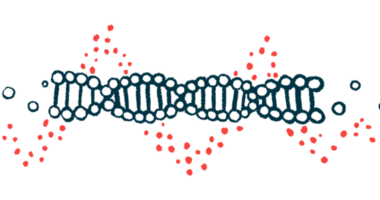Hemophilia B gene therapy benefits last more than a decade: Study
Gains sustained up to 13 years, with no new safety concerns observed

The benefits of a one-time gene therapy were sustained for up to 13 years among men with severe hemophilia B with no new safety concerns emerging, according to newly published results from a clinical trial.
The findings, which encompass the longest ever follow-up for a gene therapy study in hemophilia B, support the long-term benefits of gene therapy for this patient group.
“It’s incredibly rewarding to see the sustained safety and efficacy, which truly validates the potential of gene therapy as a one-time treatment for this condition,” Amit Nathwani, PhD, of University College London’s Cancer Institute and the Royal Free Hospital, and the study’s chief investigator, said in a press release. “Our findings answer critical questions about the long-term durability of gene therapy, offering profound hope and a significantly improved quality of life for patients.”
The study, “Sustained Clinical Benefit of AAV Gene Therapy in Severe Hemophilia B,” was published in The New England Journal of Medicine.
Hemophilia B is caused by mutations in the F9 gene that result in a deficiency or dysfunction of clotting factor IX (FIX), an important blood clotting protein. Without it, patients are susceptible to excessive or spontaneous bleeding.
A ‘promising new treatment’
Gene therapy to deliver a working version of F9 has emerged as a promising treatment approach. A gene therapy called Hemgenix (etranacogene dezaparvovec) is already approved and marketed in the U.S. and European Union for certain adults with hemophilia B.
In contrast to standard factor replacement therapies, where lifelong infusions are needed to provide missing FIX, a gene therapy offers a one-time treatment by giving the body the genetic tools it needs to make its own protein.
“The key benefit is that gene therapy is a one-time, simple intravenous [into-a-vein] infusion that’s very straightforward to do and potentially has positive effects for a lifetime,” said Andrew Davidoff, MD, a study co-investigator and chairman of the surgery department at St. Jude Children’s Research Hospital.
While gene therapy has the potential to transform the treatment landscape, the long-term safety and efficacy of such treatments is still being established. It hasn’t been known for how long the effects of a single dose will last, nor if late safety concerns might emerge years after treatment.
In 2010, researchers launched a Phase 1 clinical trial (NCT00979238) to test the safety and efficacy of a gene therapy in 10 men with severe hemophilia B. The therapy featured a healthy version of F9 packaged up into a viral carrier called an adeno-associated virus (AAV) to help it be taken up by human cells. Each participant received a single infusion at one of three doses, low, intermediate, and high.
An early study demonstrated that over three years, the gene therapy increased FIX levels, and reduced bleeding episodes and the use of FIX replacement therapies by more than 90%.
Reduction in number of bleeds
Here, the scientists report on the long-term results, with a median follow-up of 13 years. During this period, FIX levels remained stable and were highest in those given the highest dose.
“For these 10 patients, the factor levels are stable and have been at the same level across these 13 years,” said principal investigator Ulrike Reiss, MD, of St. Jude and the study’s first author.
Three people with severe joint disease resumed FIX replacement therapy within four years due to recurring joint bleeds, but the remaining seven didn’t receive any other preventive therapy during the follow-up.
Before gene therapy, the patients experienced a median of 14 bleeds per year, which was reduced to 1.5 annual bleeds over the follow-up period, a bleed reduction of nearly 10 times. The use of factor IX concentrates was reduced by more than 12 times at year 13.
In general, no new or unexpected side effects were seen. Some temporary elevations in liver enzymes occurred, but imaging of the liver didn’t show any signs of ongoing liver damage, scarring, or cancer. Monitoring the liver is important because hemophilia B gene therapies are mostly taken up in the liver, where blood clotting proteins are made. Patients are given steroid therapies after gene therapy to help curb any liver inflammation.
Neutralizing antibodies against the therapy’s AAV carrier were observed and persisted for more than a decade. Such antibodies are a reason why current gene therapies can’t be re-dosed, as this carries the risk of an immune reaction. Researchers hope to overcome this limitation.
The “findings support the long-term safety and efficacy of AAV gene therapy for hemophilia B, thus offering this group of patients a promising and durable treatment option with recently licensed gene-therapy products,” the researchers wrote.







